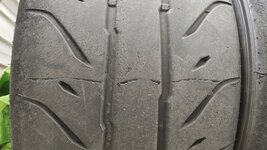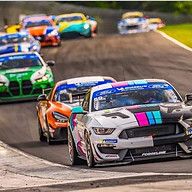I swapped out my Falken RT660 track tires for my daily-drivers. This Falken set has two Laguna Seca track days on them and maybe 100 miles of subsequent road driving (because I was lazy about getting them swapped off). When I inspected them, I found a splice line on one of the front tires. I've not seen this before.

In doing a bit of research, it seems that this is not that unusual for RT660s. It also appears to not be particularly concerning. Do you agree?
I have previously read (but ignored as esoteric) advice that says performing a heat-cycle before tracking new tires would improve the rubber bonding, minimizing the splice-line development and make the tire more robust and durable overall. I have never done this, but maybe I should. How would I accomplish this? Would a 10-minute spirited drive on a nearby winding road suffice? Is there a tire temperature and duration target I should shoot for?

In doing a bit of research, it seems that this is not that unusual for RT660s. It also appears to not be particularly concerning. Do you agree?
I have previously read (but ignored as esoteric) advice that says performing a heat-cycle before tracking new tires would improve the rubber bonding, minimizing the splice-line development and make the tire more robust and durable overall. I have never done this, but maybe I should. How would I accomplish this? Would a 10-minute spirited drive on a nearby winding road suffice? Is there a tire temperature and duration target I should shoot for?
 .
.












